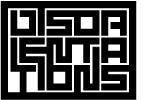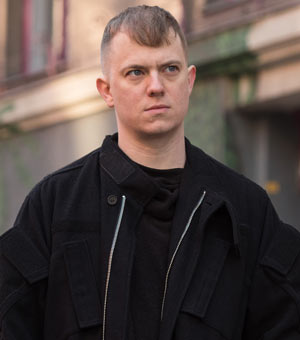Without a Name: Jon Campbell
by Travis Jeppesen on November 12, 2008
Below is my catalog essay for Jon Campbell’s exhibition in Paris, which opens on Saturday, November 15th at Galerie Jeanroch Dard.
Faced with the difficulty of writing about Jon Campbell’s work, I can only try and identify the source of that complexity and get through it that way. Because we’re not talking about a simple formal dichotomy here that can be readily broken down – the abstraction is figurative and the figuration is abstract. Nor can I imply that we are witnessing a rendering of the artist’s innermost thoughts without inadvertently digging up the exquisite corpse of surrealism, soliciting the ghost of psychoanalysis. There is nothing gimmicky in these pictures to lend itself to a crude definition – they are without affectation – and there is certainly nothing “cool” about them. None of the blatant infatuation with irony that burdened so much of the painting done late in the last century. We’re in a new century now, and the truth is, I’m writing this during a time when art writing – writing about art – has run out of steam, having bogged itself down in heady conceptual paradigms and didacticism, losing most of its audience in the process. Language, when not directly employed by an artwork, has effectively abandoned us. Jon Campbell feels this abandonment – this lack of language – but on a deeper level, beyond the mere literary. Now artists are expected to become indoctrinated via a multitude of (visual, etc.) languages from a young age. Jon, still at a young age though past his apprenticeship, has already chosen to reject all received languages. This is a daring move to make at any age in our era of mixing-and-matching, “sampling,” whatever you want to call it. It means going at it all alone, without a safety net to fall back on. And this is painful, not just for the artist, but for us, who must contend with the work.
Yet there are also others, present in a series of portraits, executed in an extremely intimate manner in the artist’s cramped studio in a delicate span of some ninety minutes each. They are portraits, and yet there is a sameness to them that effectively obliterates their subjects’ uniqueness. It could be the artist himself we see projected. Lined up together, it is the sum of their expressionlessness that unites these men. They all become the same No One. By Campbell’s own admission, the surfaces of his subjects are far less important than the situation that produces their rigid vulnerability. But this situation is absent – there is no background here to contextualize their placement.
In the accompanying works, what we find is pure situation – but again, without a clear context that lends itself to interpretation. Occasionally a figure may emerge, but it is always accidental – a shape designating a pole of thought, one that is necessarily private. So firm is the artist’s belief in the autonomy of these images that he refuses to name them – for to name is to force an interpretation and to again rely on a fixed referential language as agent.
Campbell’s situations, then, force me to contend with my own battles in the realm of language. Campbell tells me that his grand theme is identity, and what is language but a projection of identity. But identity, in Campbell’s paintings, is always masked. He has no interest in painting a particular personality. If he is evasive, then it branches from the same evasion that ultimately coats all human perception. Painting as a negative act in which the negative loses its value in a sea of specificity. The painter becomes a host of possibilities in this retrospective denial of arrival. What we are left with are the raw recordings, and the invigorating opportunity to explore them without a guide.



One comment
Very nice work! I wish I could have seen your exhibitions!
Lida
by lida lowrey on May 17, 2014 at 3:30 pm. #